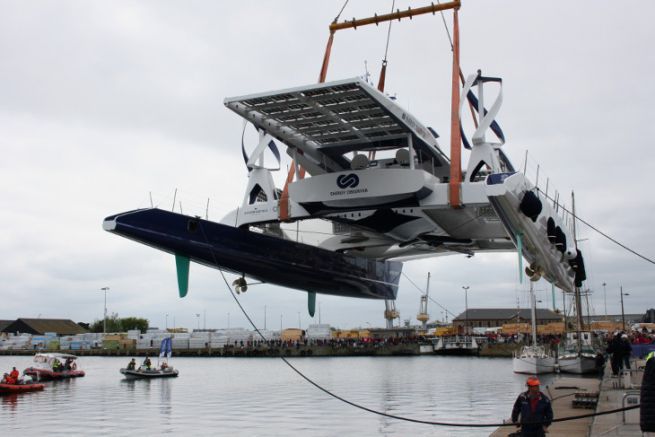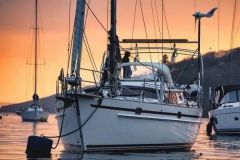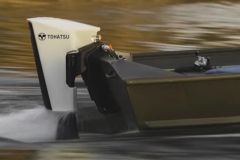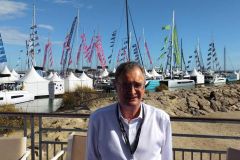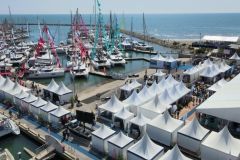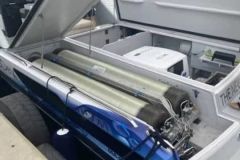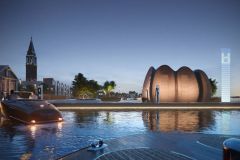Festive launch
The Energy Observer, the first"autonomous hydrogen" vessel, was launched on 14 April 2017. The culmination of three years of project and research, including a year's work on Peter Blake's former catamaran Enza, now Energy Observer, the boat's launch brought together all those involved in the project and many spectators on the open space opposite the town of Saint-Malo. Nicolas Hulot, godfather of the boat, was present for the occasion. To add to the party, Victorien Erussard, initiator of the Energy Observer project and skipper of the boat, was able to attend the birth of his second son a few minutes before the launch!
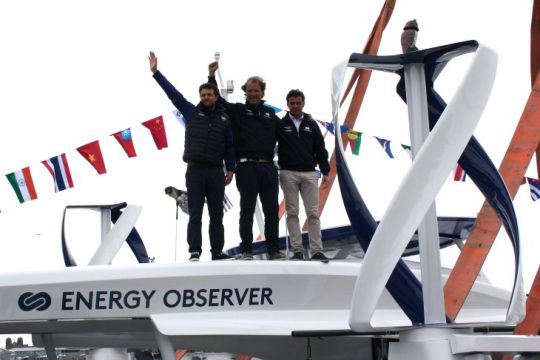
Producing hydrogen
While the use of fuel cells on ships is not new, until now hydrogen had to be shipped before leaving the dock, as it is produced ashore. The Energy Observer marks a new stage by now making it possible to produce its own fuel by electrolysis of sea water.
Storing energy
Covered with solar panels and equipped with vertical axis wind turbines, the Energy Observer has several means of energy production. These ecological means having an intermittent production linked to the sun and the wind, the electrolysis device will make it possible to store the surplus in the form of hydrogen, an alternative whose weight/power ratio is much more interesting than conventional batteries or a conventional fuel. Energetically, the Energy Observer's 60 kg hydrogen capacity is equivalent to 240 L of fossil fuel.
The challenge of energy storage thanks to the hydrogen chain goes far beyond the maritime sector and is of interest to the entire renewable energy sector, as demonstrated by the involvement of CEA-Liten, a partner in the project.
Mixing energies
In addition to the hydrogen fuel cell, the Energy Observer incorporates many innovative energy technologies. The catamaran is covered with 120 m² of solar panels, of which those located at the back of the boat use the technology known as the drop of water, taking advantage of the concentration of energy thanks to the reflection on the water.
Vertical wind turbines have been optimized to produce energy.
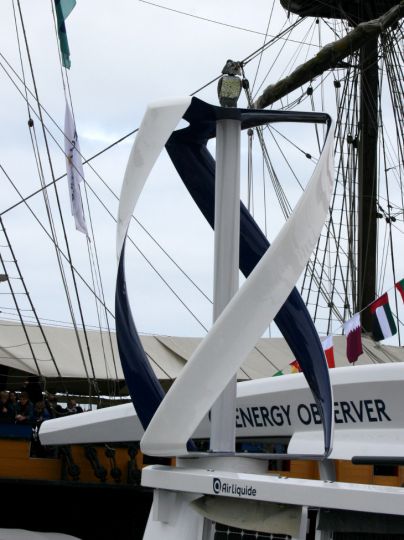
Vertical wind turbine of the Energy Observer
An intelligent kite wing, developed with Yves Parlier's Beyond The Sea company, will offer sailing assistance for propulsion.
Electric propulsion motors are reversible in order to produce electricity.
Tests and demonstrations
After two months of testing in Saint-Malo to complete the boat's development, the Energy Observer will begin a tour of France via Paris in July to reach Monaco in December 2017. The catamaran will then begin a 6-year world tour, during which Jérôme Delafosse will make reports for the Planète channel.
